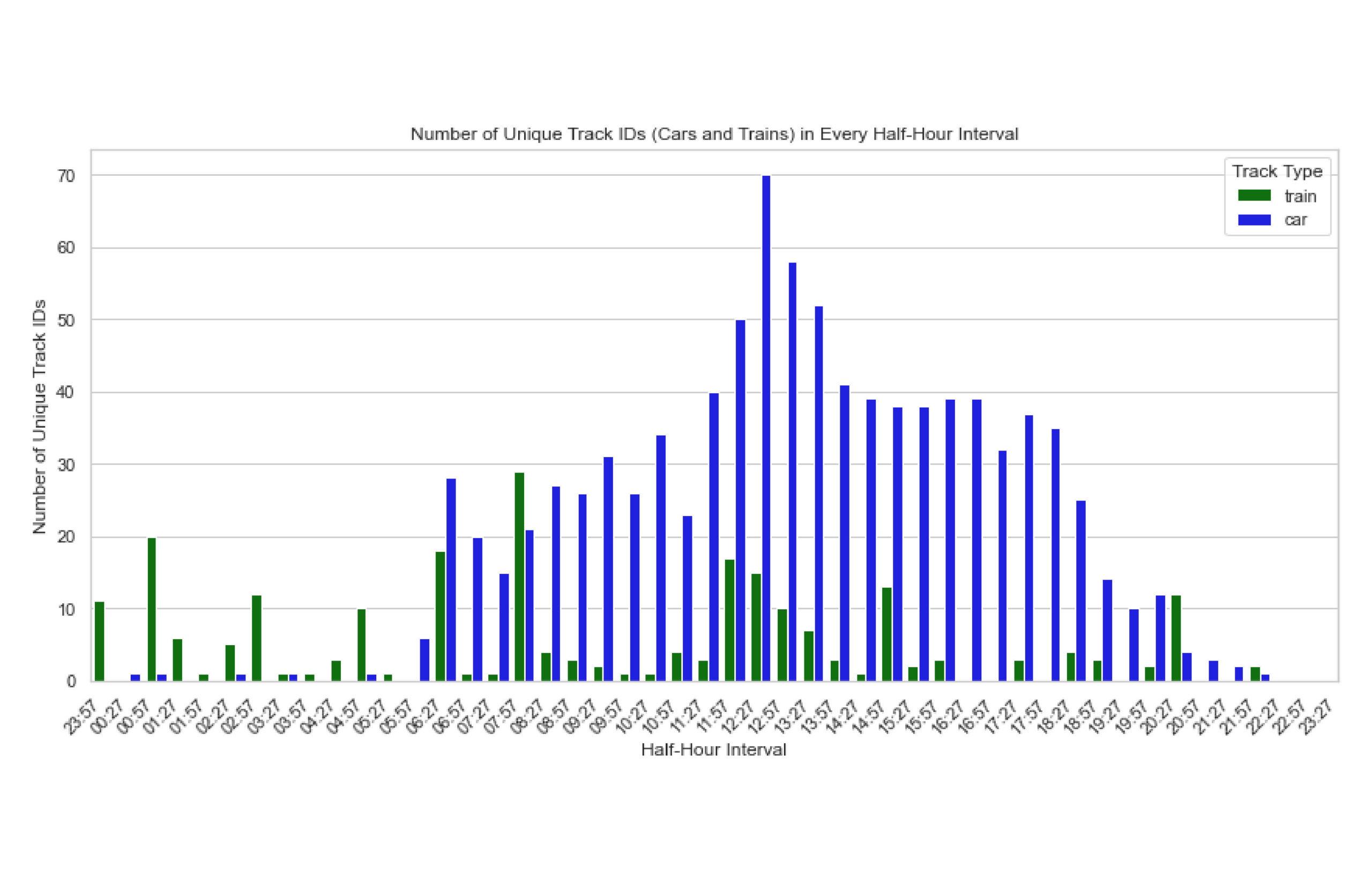das technology
Urban areas and Smart City concepts
Urban traffic monitoring:
• DAS can record vibration signals via buried optical fiber cables in subsurface conduits.
• In urban areas and cities, it can monitor various traffic (cars, buses, trams and trains) and detect seismic wavefields caused by the vehicles to provide insights into traffic flow, speed and density/volume.

Structural health monitoring:
• DAS can by the use of fiber optic cables deployed on bridges, buildings, and tunnels detect strain and vibrations.
• Early identification of structural damage, or wear and tear, contributes to better safety and timely maintenance.

Perimeter and security:
• DAS serves as an effective intrusion detection system.
• Monitoring og urban environments and restricted areas for unauthorized access or suspicious activity.

Utility network and pipeline monitoring:
• DAS can monitor underground utility networks, such as water and gas supply networks and electricity distribution networks.
• Detects leaks, breaks, or cable faults, ensuring reliable services.

Environmental impact assessment:
• DAS detects ground movements, soil settling, and subsidence due to construction.
• Supports sustainable urban planning and minimizes disruptions.

Smart city applications:
• DAS contributes to smart city concepts by providing real-time data of activity.
• Enhances traffic management and flow, mobility, safety and environmental sustainability.
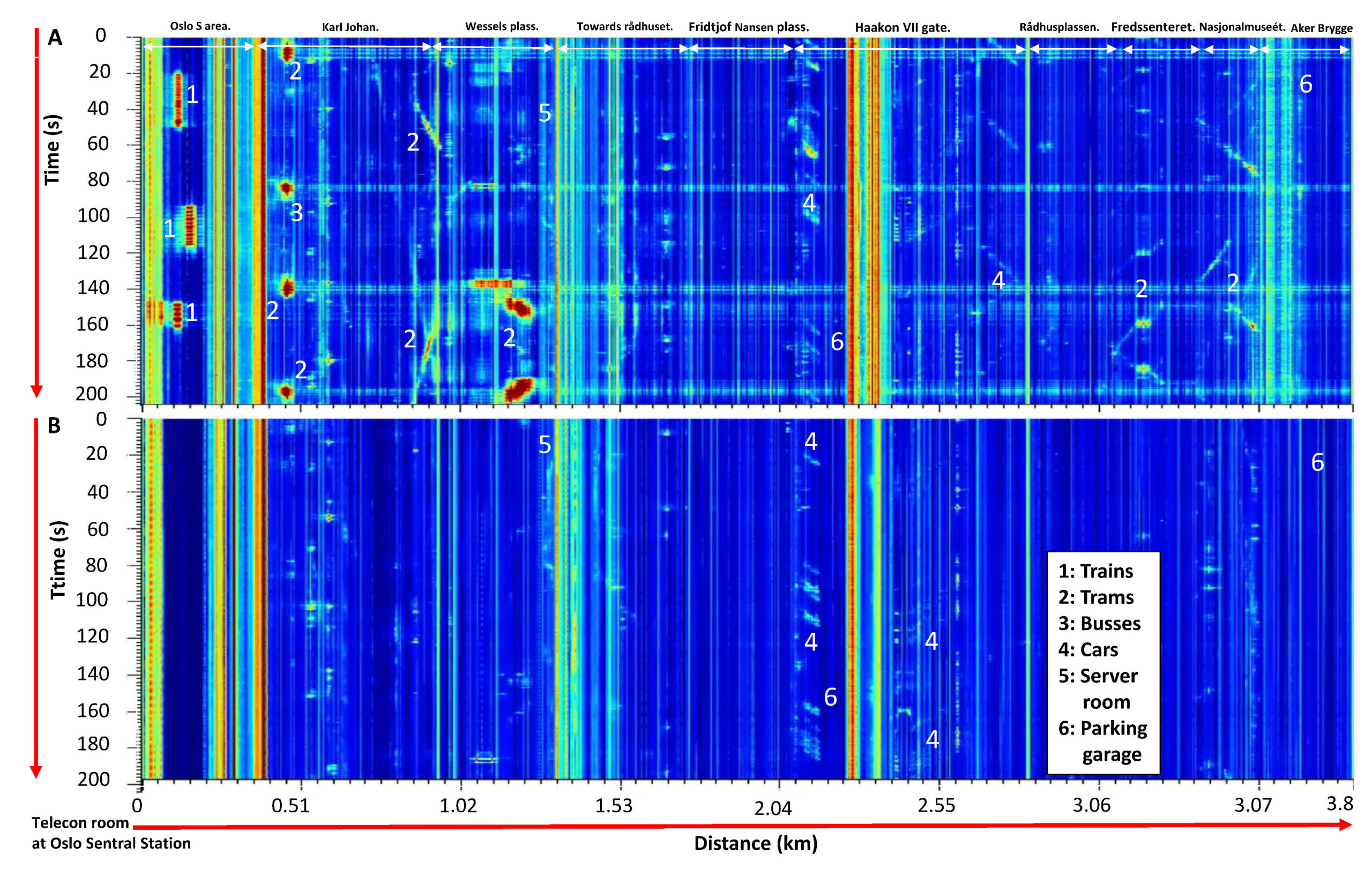
DAS data measured along a 3.8 km fiber cable in the ground from downtown Oslo during day (top) and night (bottom).
Various traffic where recorded, such as trains, trams, buses, cars and events from various other acoustic generating sources in an urban area.
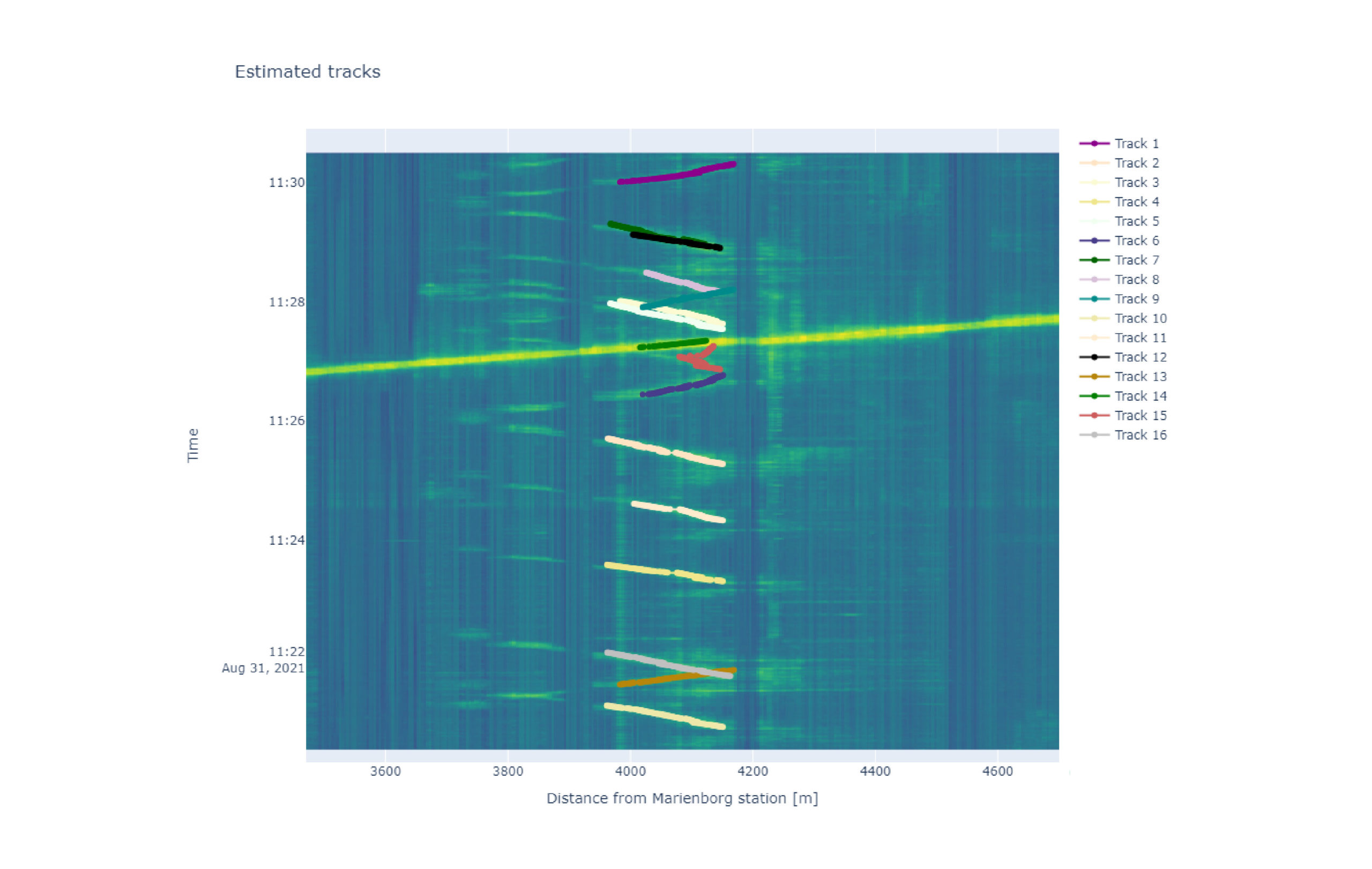
DAS data of cars and trains from a fiber alongside a road and railway track.
Left image shows cars and trains resulting from DBSCAN algorithm and data-association Kalman filters. Right figure shows the traffic intensity during the day.
